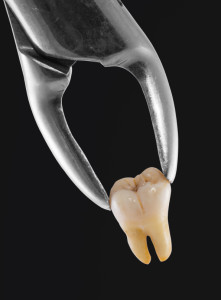 Tooth extraction is a common dental procedure in which a tooth is removed from its socket. While dentists aim to preserve natural teeth whenever possible, there are situations where tooth extraction becomes necessary. In this article, we will explore the main reasons for tooth extraction, the procedure itself, sedation options, post-extraction care, and what to avoid during the healing process.
Tooth extraction is a common dental procedure in which a tooth is removed from its socket. While dentists aim to preserve natural teeth whenever possible, there are situations where tooth extraction becomes necessary. In this article, we will explore the main reasons for tooth extraction, the procedure itself, sedation options, post-extraction care, and what to avoid during the healing process.
Main Reasons for Tooth Extraction
Tooth extraction may be recommended for various reasons:
a) Severe Decay: When tooth decay reaches an advanced stage and cannot be treated with restorative procedures like fillings or root canals, extraction may be necessary.
b) Gum Disease: Advanced periodontal (gum) disease can lead to loose teeth that require extraction.
c) Crowding: In some cases, orthodontists recommend tooth extractions to create space for proper teeth alignment during orthodontic treatment.
d) Impacted Wisdom Teeth: Wisdom teeth, also known as third molars, are often extracted when they become impacted (unable to fully emerge) or cause pain and discomfort.
e) Infection or Abscess: Dental infections that do not respond to antibiotics may require tooth removal to prevent the spread of infection.
Tooth Extraction Procedure
Dentists perform tooth extractions using local anesthesia to numb the area around the tooth. The procedure involves:
- Loosening the tooth in its socket using specialized dental instruments.
- Extracting the tooth gently, taking care not to damage the surrounding tissues.
- Cleaning the extraction site and placing gauze to control bleeding.
- Sedation During Tooth Extraction
Dentists may use various forms of sedation for tooth extractions, depending on the complexity of the procedure and the patient’s anxiety levels. Sedation options include:
Local Anesthesia: Numbing the area around the tooth to ensure you don’t feel pain during the extraction.
Nitrous Oxide (Laughing Gas): A mild sedative that can help you relax.
Oral Sedation: Prescription medication taken before the procedure to induce drowsiness and reduce anxiety.
Intravenous (IV) Sedation: Administered through an IV, this form of sedation provides a deeper level of relaxation but allows you to remain conscious.
Most Painful Tooth to Extract
The difficulty and discomfort associated with tooth extraction can vary from person to person and depend on the tooth’s location and condition. In general, impacted wisdom teeth or deeply rooted molars tend to be more challenging to extract and may cause more discomfort.
Recovery After Tooth Extraction
Recovery time varies but typically takes a few days to a couple of weeks. Here are some key points to aid the healing process:
Rest: Avoid strenuous activities for the first few days.
Pain Management: Take prescribed or over-the-counter pain relievers as directed by your dentist.
Swelling and Ice: Apply an ice pack to the cheek to reduce swelling for the first 24 hours.
Soft Diet: Stick to soft foods like yogurt, mashed potatoes, and soup initially.
Oral Hygiene: Gently rinse your mouth with warm saltwater and avoid rigorous brushing around the extraction site.
Follow Post-Op Instructions: Adhere to any specific guidelines provided by your dentist.
Things to Avoid After Tooth Extraction
To promote proper healing and minimize complications, avoid the following:
- Smoking or using tobacco products, as they can hinder the healing process.
- Consuming hot or spicy foods that may irritate the extraction site.
- Drinking through straws, which can create suction and dislodge the blood clot (dry socket).
- Touching or poking the extraction site with your tongue or fingers.
- Skipping prescribed medications or failing to follow post-op instructions.
Conclusion
Tooth extraction is a common dental procedure that may be necessary for various reasons. Dentists use local anesthesia and, if needed, sedation to ensure patient comfort during the procedure. Recovery times vary, but following post-extraction care instructions and avoiding certain activities can aid the healing process and minimize complications. If you ever require a tooth extraction, consult with your dentist to discuss the best approach for your specific situation and receive personalized guidance for a smooth recovery.
